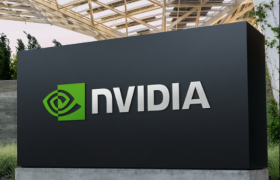NVIDIA's Results Show AI Boom May Be Slowing

NVIDIA’s eagerly anticipated second-quarter results last night showed ongoing strong growth but disappointed investors who expected more dramatic results and guidance. Still, the report was filled with tidbits that indicate the direction of the market for artificial intelligence products and services—and show that while an AI bubble may be deflating a bit, that doesn't detract from the direction of the market.
A quick recap: NVIDIA reported overall revenue of $30 billion for the quarter, up 15% sequentially and 122% year-over-year (y/y). At $26.3 billion, datacenter product sales accounted for 87% of total revenue (more on that momentarily). Adjusted net income was $16.9 billion, up 11% sequentially and 152% y/y. Adjusted EPS was 68 cents, up 152% y/y and 11% sequentially. NVIDIA ended the quarter with $34.8 billion in cash, up 17% y/y. All measures beat analyst estimates.
Revenue guidance for next quarter is $32.5 billion, plus or minus 2%, improving on the Street average estimate of $31.9 billion. (But even this disappointed some analysts, who predicted upwards of $37 billion.)
Why Success Disappoints NVIDIA Investors
So, what’s not to love? Investors have grown accustomed to stratospheric growth numbers from NVIDIA, resulting from the ramp-up of accelerated computing gear delivered to the hyperscalers over the last several quarters. This ramp-up in Q1 of NVIDIA's fiscal year, for instance, resulted in overall revenue growth of 262% y/y, datacenter sales growth of 427% y/y, adjusted net income growth of 263% y/y, and adjusted EPS growth of 461% y/y. Though this quarter’s sales stayed strong, they didn’t live up to those levels of growth. And the sequential growth rates are declining. Sequentially (from quarter to quarter), NVIDIA's revenue only grew 15% from the last fiscal quarter. Sequential growth peaked nearly a year ago at 87% and has been declining every quarter since.
There are also signs that the hyperscalers, which accounted for about 45% of NVIDIA datacenter revenue this quarter, may be spending too much on AI gear, given that many enterprises are still evaluating the impact of AI on their businesses. This has some investors expecting an AI bubble to burst, perhaps taking down the tech market with it.
Early this morning, NVIDIA shares were trading at $123.84, down −1.77 (1.41%), after losing about 5% of their value in after-hours trading overnight.
NVIDIA Says No Slowdown in Demand
For its part, NVIDIA claims no slowdown in demand for its products. Management last night said demand for its new Blackwell chip platform is “incredible” and cited multiple samplings and over 100 system designs underway by OEMs and ODMs worldwide. The company anticipates “several billion” in Blackwell sales for its fourth fiscal quarter, with sales ramping through the following year. The company also cited a ramping of its H200 GPUs in Q2, with strong ongoing demand across all verticals.
At the same time, NVIDIA acknowledged it had to make an adjustment to the GPU mask for Blackwell to improve production yields. This means that the sheet of glass used to print circuitry onto the chips needed to be fixed to enable manufacturing to move along more smoothly.
Analysts on last night’s earnings call worried this point exhaustively, questioning management on Blackwell’s future and casting doubt on CEO Jensen Huang’s predictions for its success. All questions were met with strong assertions by Huang that Blackwell, and the rest of NVIDIA’s datacenter products, will continue to show multibillion-dollar sales both near and long term.
Report Highlights: Networking, China, and Enterprise AI
Several interesting points were highlighted on last night’s call, indicating the ongoing strength of the AI market, despite a market correction. These points included the following:
Ethernet sales are strong. NVIDIA’s Spectrum-X Ethernet switching systems are selling like hotcakes, management said. The switches and associated SmartNICs helped boost datacenter networking sales to $3.668 billion, up 16% sequentially and 114% y/y. (The other portion of datacenter sales comprises compute products, which accounted for $22,604 billion of datacenter’s total $26,272 billion.) Sales of Spectrum-X point to industry demand favoring Ethernet alongside or as a replacement for NVIDIA’s InfiniBand datacenter networking technology. NVIDIA said Spectrum-X will become a multibillion-dollar product line within a year. It plans to upgrade the switching platform yearly.
China remains a factor. Datacenter sales in the PRC contributed “significantly” to revenues this quarter, despite U.S. export prohibitions. Management expects the market in China to remain “very competitive.” This puts NVIDIA on track to continue to work on chips for the PRC market that align with U.S. export regulations.
Omniverse digital twinning is on the rise. In an interesting aside, NVIDIA CFO Collette Kress noted that Foxconn, which manufactures the Blackwell chip platform, is using NVIDIA Omniverse to virtually mimic its factories for planning and management. Omniverse, recall, is a platform designed to create digital twins and virtual worlds for enterprise use. Mercedes-Benz and other companies as well have signed contracts for Omniverse services to duplicate their factories.
Enterprise AI has arrived. Throughout last night’s call, management stressed that enterprises, not just cloud service providers, account for a growing portion of NVIDIA’s revenue. “The enterprise AI wave has started,” said CFO Kress. She said enterprises drove sequential growth in the quarter and that NVIDIA is working with most of the Fortune 100 companies on AI initiatives across industries and geographies. Further, inferencing, which is key to enterprise adoption of AI, accounted for over 40% of datacenter revenues.
Futuriom Take: NVIDIA continues to ramp successfully, but investors must come to terms with the reality that the growth in the AI market is slowing, forcing a necessary correction to their expectations.

















